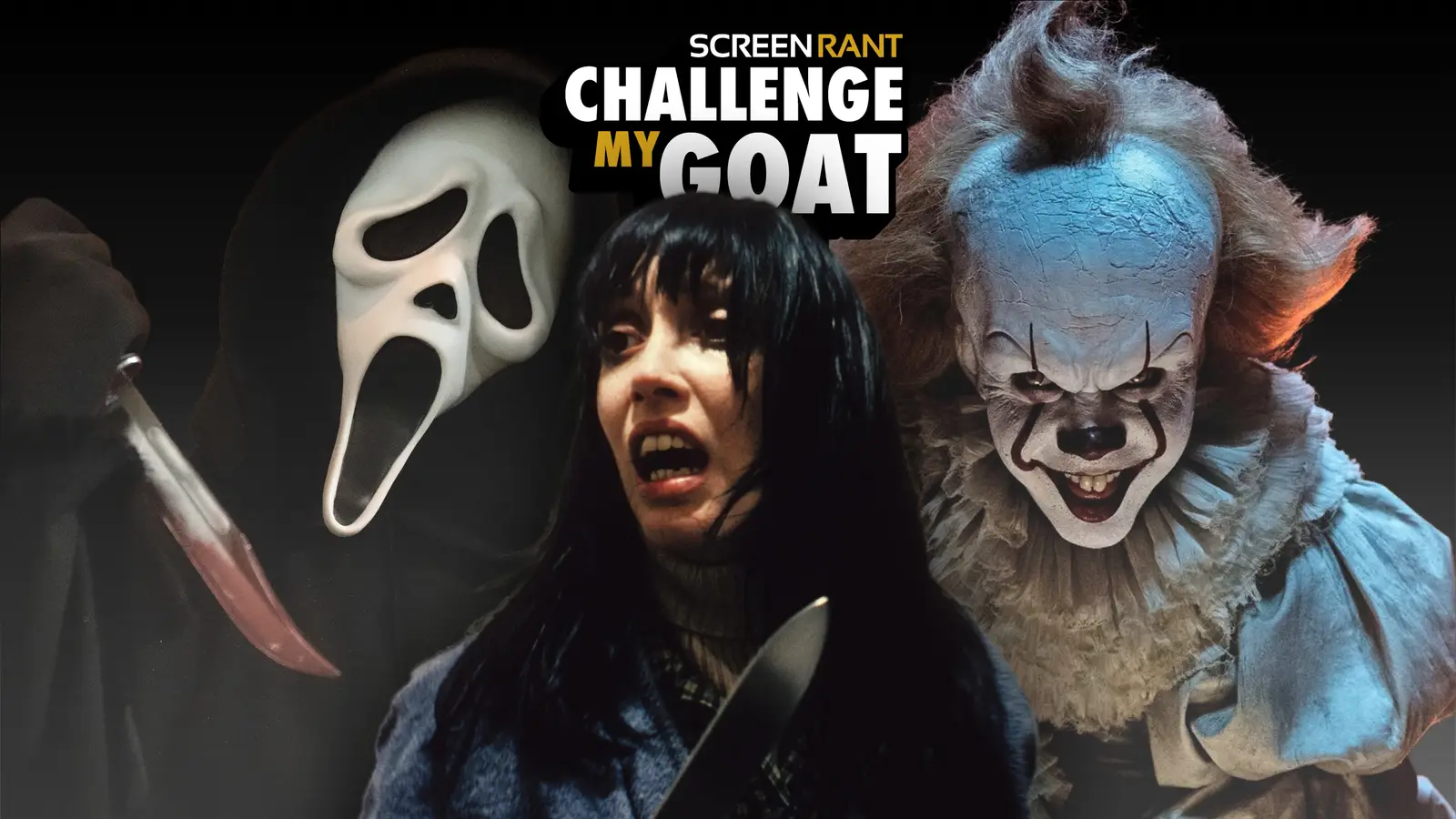Copyright Screen Rant

Hey there! I’m Britt Hayes, Deputy Editor at MovieWeb. I’ve been writing professionally about movies and culture for the past 16 years – you may have seen me at The A.V. Club, Birth.Movies.Death, or back in the day at ScreenCrush. My obsession with movies began in early childhood; as a latchkey kid, the TV was my regular babysitter, and I got hooked on the horror genre right away. While I’ve written about all kinds of movies, horror is still my first love, so when ScreenRant asked me to declare the greatest horror movie of all time, the choice was immediately clear, because it also happens to be one of my favorite movies of all time: Alien. Disagree? Take it up with me in the comments. Alien Was The Chestburster That Horror And Sci-Fi Needed Alien isn’t just the greatest horror film of all time; it’s also a perfect movie. I don’t remember the first time I actually saw Ridley Scott’s sci-fi horror masterpiece in its entirety. In fact, despite my early horror fandom, I’m pretty sure that my first exposure to Alien was the Chestburster spoof in Mel Brooks’ Spaceballs (still one of the funniest scenes of all time). I had seen Alien through osmosis, the way most kids see iconic grown-up movies – Star Wars, Jaws, The Godfather – before ever really seeing them, planting the seeds for my inevitable obsession. Released in 1979, Alien was meant to capitalize on the success of 1977’s Star Wars. Instead, it became a cultural phenomenon that birthed its own cinematic legacy. Based on a screenplay by Dan O’Bannon, Alien takes place on the Nostromo, a commercial towing vessel en route back to Earth when the crew, led by Captain Dallas (Tom Skerritt), receives what they believe to be a distress signal on a nearby planet. Upon arrival, the crew discovers an abandoned spaceship and the remains of a large alien being with a conspicuous gaping hole in its chest. As they explore the ship, Officer Ripley (Sigourney Weaver) learns that the distress signal was actually a warning, and that the strange eggs on board contain a terrifying, highly evolved alien lifeform. Worse: the alien requires human hosts to progress through its life stages. With the Nostromo damaged and in need of repair, the crew – including executive officer Kane (John Hurt), science officer Ash (Ian Holm), navigator Lambert (Veronica Cartwright), and engineers Brett and Parker (Yaphet Kotto and Harry Dean Stanton) – are forced to combat a deadly, formidable creature unlike anything they’ve ever encountered: the Xenomorph. The Xenomorph Is A Walking Nightmare, Sigourney Weaver Is A Dream Heroine Designed by German artist H.R. Giger, the Xenomorph is a uniquely terrifying creation rooted in the artist’s concept of biomechanics, marrying human biology with machine details. It’s also a feat of practical effects. Bolaji Badejo, a Nigerian artist and design student, was hired to play the Xenomorph based on his 6’10” frame (stunt performers Eddie Powell and Roy Scammell tapped in for some of the trickier scenes), resulting in one of the most impactful and impressive monsters in cinema history. I often think about a quote from the late film critic Roger Ebert: “It’s not what a movie is about, it’s how it is about it.” Both are true of Alien, a film in which the design, narrative, and thematic ideas work in total symbiotic harmony. The retro-industrial design of the set enriches the texture of the film, making it feel immersive, so that even the most unbelievable moments – an alien bursting from Kane’s chest over dinner, for instance – are more tangible. But what really makes Alien such an indelible masterpiece of horror, in addition to Sigourney Weaver’s iconic performance, is all the thematic components thrumming under the hood. Though Scott originally thought of Ripley as a man, the script was written so that all of the characters could be played by anyone, regardless of sex. Casting Weaver as Ripley was a major stroke of genius that, intentionally or not, emphasizes the psychosexual aspects of Alien and underscores the story’s misogynistic component. Giger’s Xenomorph design goes through multiple iterations. It starts with the Ovomorph, or egg, a traditional symbol of fertility, which gives birth to the Facehugger, a many-legged, insectile creature featuring a vaginal opening from which a phallic organ protrudes, violently “impregnating” the host. Then there’s the Chestburster, with its petite, similarly suggestive shape; and, finally, the adult Xenomorph. The traditional alien has a long, phallic head and skin evocative of rubber and latex – materials associated with fetishism. I’ll spare you the longer thesis on sexual violence and oppression, but casting a woman to play Ripley underscores these themes in visceral ways, particularly in the film’s third act, when we discover that Ash is not quite the man he seems. The physical and visual aspects of that climactic moment are deeply unsettling, in part because of the gender dynamics, but how Ripley resolves that conflict is incredibly cathartic. There’s also something terrifying about watching the Facehugger commit what is essentially an act of sexual violence when it attacks Kane. It challenges our gendered assumptions on a subconscious level because, in both movies and real life, women are typically the victims of this sort of violence. In a broader story sense, so much of what happens in Alien wouldn’t happen if the men on the Nostromo just listened to Ripley. It’s Ripley who explains that the perceived SOS call is actually a warning. It’s Ripley who says the crew members exposed to the eggs should be quarantined, but Ash overrides her. And it’s no surprise that it’s Ripley who becomes the captain of the Nostromo as her crewmates are killed off. Alien Isn't A Monster Movie; It's A Capitalist Horror Story There’s another compelling thematic component to Alien, one that’s become even more pronounced in the decades since it first hit theaters. Looming over the story is the Nostromo’s employers, the Weyland-Yutani corporation. The Nostromo’s primary purpose is to lug automated oil and ore refineries between Earth and the outer space colonies, suggesting a dystopian future in which humans have colonized other planets to exploit their resources. Operating the Nostromo’s systems is Mother, an artificially intelligent computer that can communicate with the crew and ostensibly follow instructions. When the shit hits the fan in Alien, Ripley discovers that Mother has been surreptitiously programmed by Weyland-Yutani with instructions to treat the human crew as expendable. Alien presents a world dominated by corporations that have adopted AI systems to act in their best financial interests, ensuring ultimate control over wealth and resources while treating a blue-collar human workforce as expendable. That’s not a huge leap from where we are at this moment in time. (Of course, later installments in the franchise expand on these concepts further, making the similarities to our present concerns more pointed.) The horrors endured by the Nostromo crew aren’t merely the result of casual misogyny, but of unchecked corporate capitalism. Again, while it is a work of science fiction, Alien is filled with recognizable elements, and our ability to identify with settings and people in movies is what makes them so effective. The same is true, by a few orders of magnitude, in horror, where the audience needs to believe the threat is real and imminent. Many horror films have achieved this, but few have done so with such psychological acuity and breathtaking presentation. Also, there is a cat. Disagree? Have another selection for the Horror Movie GOAT? Hit the comments section below and let me hear your opinions. Listen to all the Challenge My GOAT podcast episodes on the following platforms: YouTube Spotify Amazon Apple iHeartRadio Player FM Podbean



